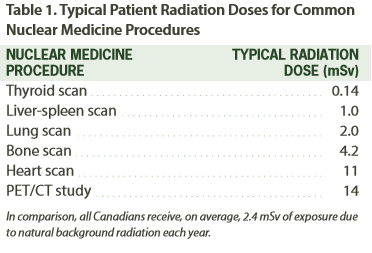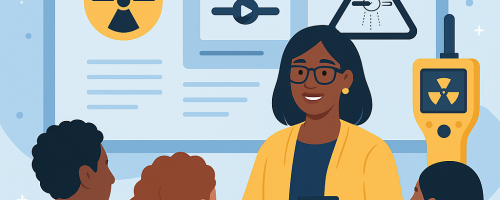WHAT IS NUCLEAR MEDICINE IMAGING?
Nuclear medicine imaging uses small amounts of radioactive drugs and images how those drugs move through your body. This helps doctors see how your body is working. In contrast, x-rays or CT scans show how your body looks (i.e., anatomy) rather than how it works (i.e., function). Early diagnosis is often possible with Nuclear Medicine since changes in function often occur before changes in anatomy.
Unlike CT or x-ray devices, nuclear medicine imaging devices do not themselves give off any radiation. The nuclear medicine pharmaceuticals used give off “gamma rays” that allow one to track the progress of radioactive pharmaceuticals within the body. Note that radioactive material used disappears (decays) in a short time.
IS YOUR NUCLEAR MEDICINE TEST NECESSARY?
It is important as a patient to discuss with your doctor why you are receiving any test, no matter how small the risk. You should find out what your doctor expects to learn from the nuclear medicine procedure and how those results could affect your treatment in the future. If a procedure offers useful information that is likely to help your doctor decide on your treatment, the benefits of Nuclear Medicine Imaging will outweigh its small potential risk.
HOW MUCH RADIATION IS RECEIVED FROM NUCLEAR MEDICINE IMAGING?
The average effective dose from nuclear medicine imaging depends on the test being performed. In general, the amount of radiation from nuclear medicine procedures is similar to that from other radiologic procedures and from natural background radiation.

IS THERE A RISK ASSOCIATED WITH THE USE OF NUCLEAR MEDICINE?
Exposure to high levels of ionizing radiation can lead to serious adverse effects, including cancer. While there is no direct evidence that the low amount of radiation used in nuclear medicine leads to such effects, it is prudent to assume that every exposure to ionizing radiation carries some risk. However, when warranted, a nuclear medicine test gives your doctor important information that is worth the small possible risk.







